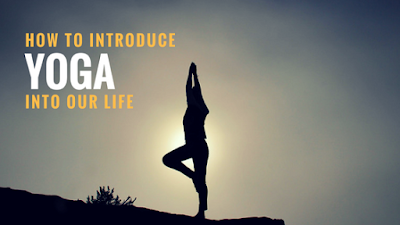How to Introduce Yoga into Our Life
Yoga is a
psycho-physiological activity which involves a combination of bodily postures
along with psychological and mental processes. The aim of all yogic practices
is to turn our consciousness inwards to achieve a state of concentration and
inner calmness. Yoga works in a systematic way to achieve a state of well-being
and calmness. At Akshara Yoga School we are committed to offer Yoga based on
its principles for its easy introduction into one’s life. We can enumerate the
principles of yogic intervention in the following sequence.
http://aksharayogaschool.com/best-yoga-teacher-training-in-india/
1.
Purification
(Shodhan): though yoga is a
discipline of mind, however in order to purify the mind it is necessary for the
body to go under purification. With the purification of body, the energy blocks
are released and various body systems are properly maintained and harmonized.
2.
Diet
modification (Ahara): Yoga emphasizes on mitahara, which are
related to quality and quantity of food and also the state of mind during the
intake of food. Food should be light and freshly cooked. Mitahara also
advocates that the food should be eaten with positive state of mind with utmost
concentration.
3.
Postural
modification (Asana):
while training the mind it is essential to be able to assume a stable and
agreeable position, so that the mind is free from bodily interference.
Therefore asana develops the ability to overcome the urge that compels
us to move or change position. It brings stability in body. http://aksharayogaschool.com/
4.
Relaxation
(Vihara): relaxation can
be brought about by recreation and creative activities. These activities bring
joy and happiness. There are also specific relaxative asanas such as shavasana
and makarasana which remove tension and bring physical and mental
relaxation. http://aksharayogaschool.com/yoga-vacation/
5.
Breath
modification (Pranayama): through
breath modification we regulate the breath and its rhythm by slowing it down.
There is a close connection between the flow of respiration and the dynamics of
mind. With slow breath mind achieves the capacity to concentrate.
'
6.
Concentration
(Dharana): concentration
brings “one-pointedness” of mind on a chosen object focused upon internally. It
helps the mind in penetrating the essence of the object and grasp its nature
internally.
7.
Meditation
(Dhyana): when
concentration is spontaneous it turns into meditation. In this stage there is
an effortless flow of the object of concentration. This enables the mind for
supra-sensory cognition of object to know its underlying Reality. In this stage
the mind is absolutely calm.
















